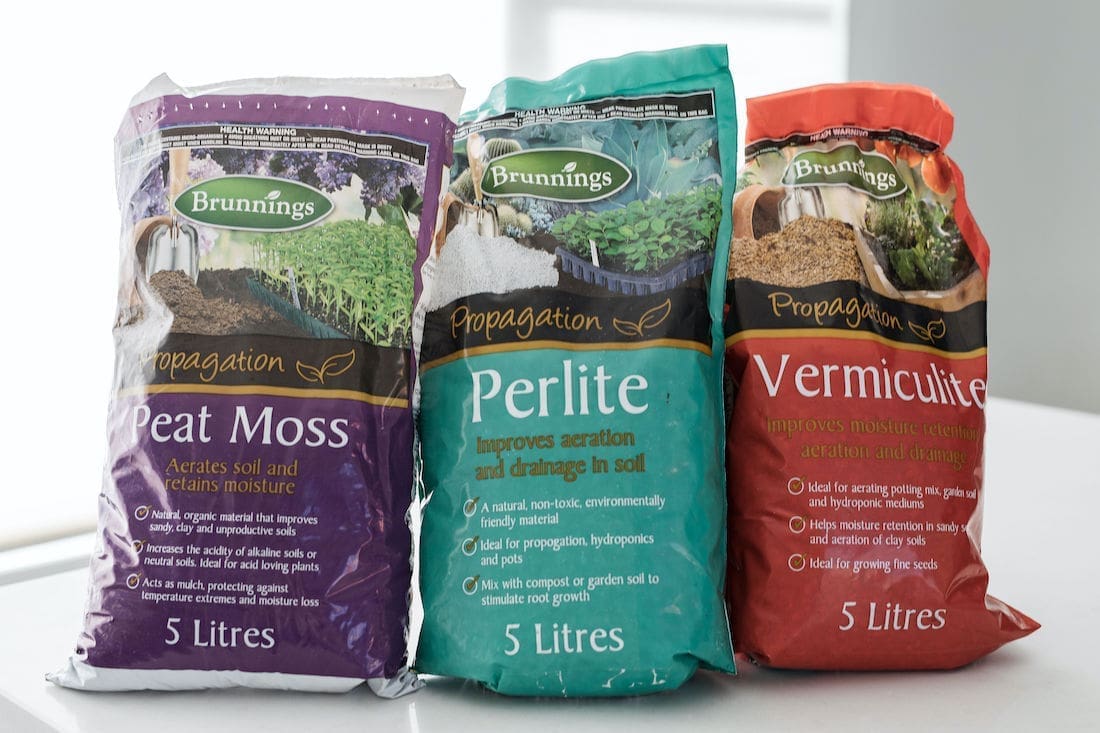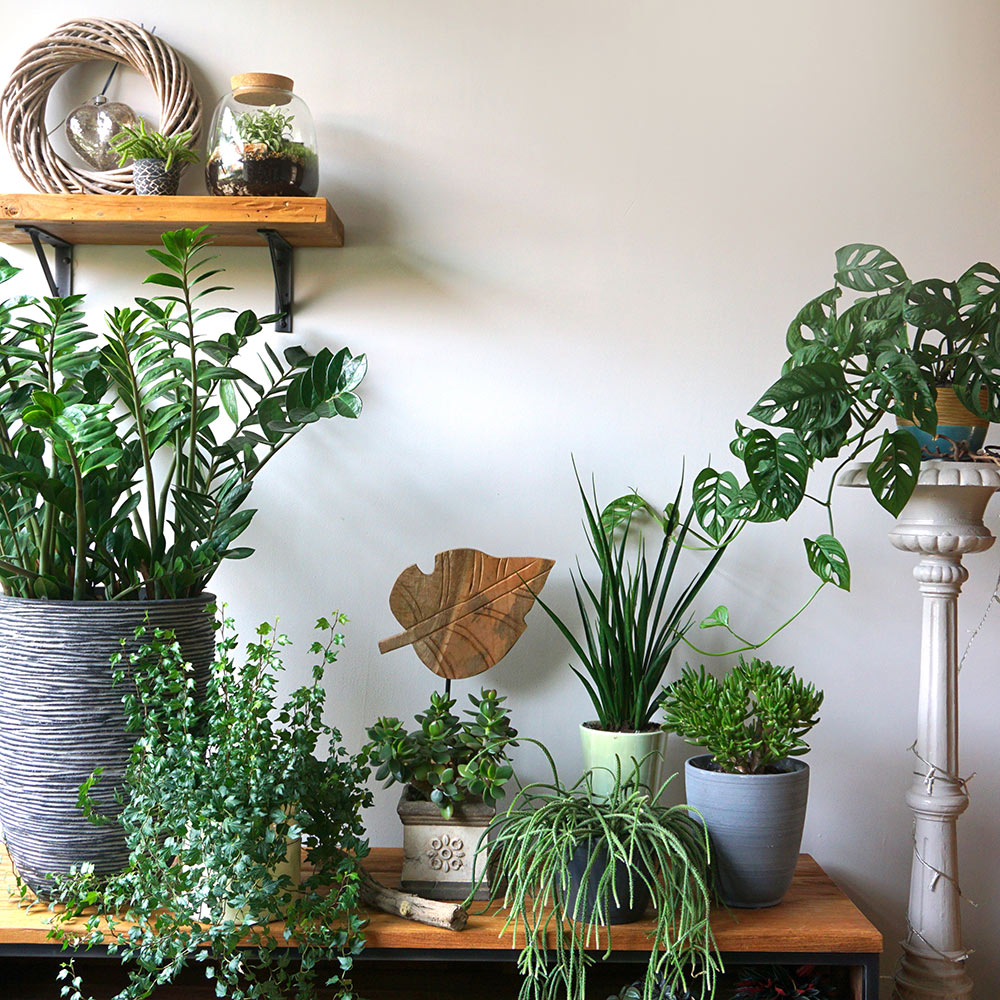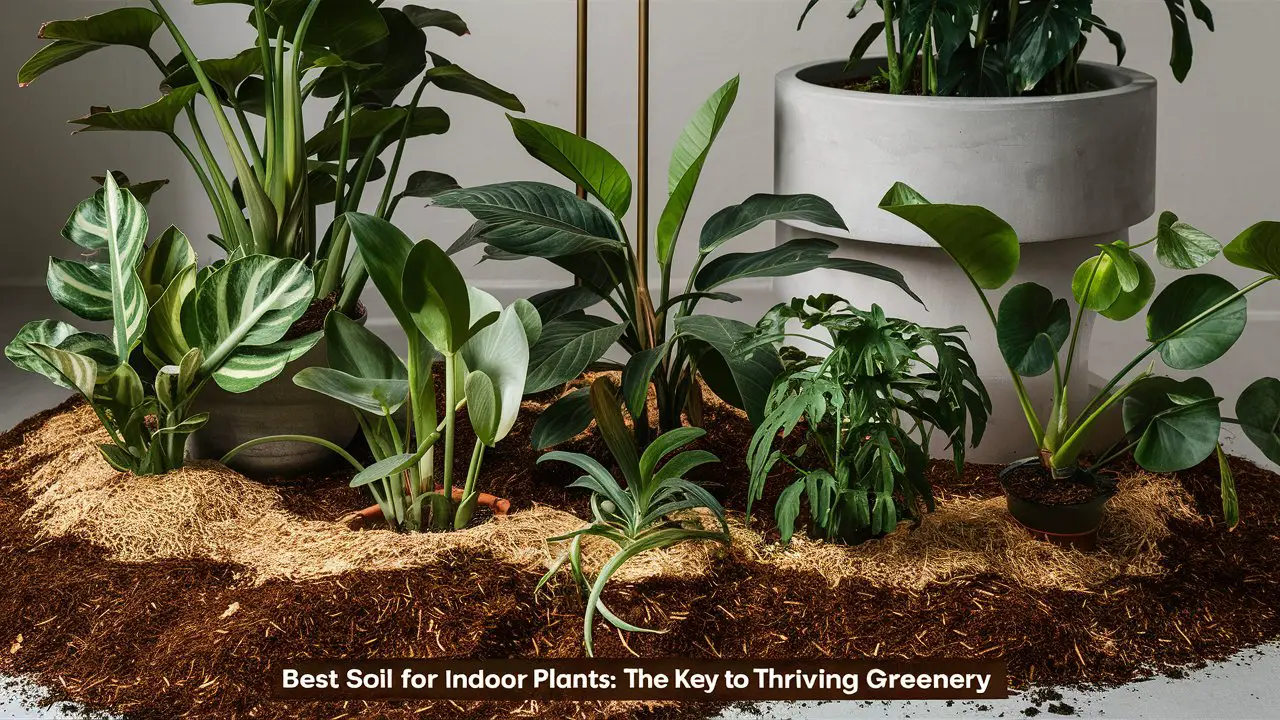To make the best soil for indoor plants, mix potting soil, perlite, and organic compost. Ensure proper drainage and aeration.
Indoor plants thrive with the right soil mix. The ideal soil must be well-draining, rich in nutrients, and light enough for roots to breathe. Combining potting soil, perlite, and organic compost creates an optimal environment. Potting soil provides essential nutrients, while perlite enhances drainage and prevents root rot.
Organic compost adds beneficial microorganisms and extra nutrients. This balanced mix ensures healthy plant growth. Regularly check moisture levels and adjust watering habits to maintain soil health. With the right soil, your indoor plants will flourish, adding beauty and freshness to your living space.

Credit: stylecurator.com.au
The Importance Of Quality Soil For Indoor Plants
Quality soil is crucial for healthy indoor plants. It provides essential nutrients and support. Good soil helps roots grow strong and absorb water effectively. Poor soil can lead to weak plants and poor growth.
Key Benefits
Quality soil offers many benefits for indoor plants. Here are some key benefits:
- Improved Nutrient Absorption: Quality soil contains the right nutrients. Plants absorb these nutrients easily.
- Better Water Retention: Good soil retains water well. This ensures plants stay hydrated longer.
- Enhanced Root Growth: Quality soil promotes strong root development. Strong roots support healthy plant growth.
- Pest and Disease Resistance: Healthy soil can reduce pests and diseases. Plants stay healthier and grow better.
Common Soil Issues
There are several common soil issues to watch for:
- Compaction: Compacted soil restricts root growth. Roots need space to grow freely.
- Poor Drainage: Soil with poor drainage leads to root rot. Proper drainage is vital for healthy roots.
- Nutrient Deficiency: Soil lacking nutrients results in weak plants. Ensure your soil has a good nutrient mix.
- pH Imbalance: Incorrect pH levels can harm plants. Test and adjust soil pH for optimal plant health.
By understanding these issues, you can choose the best soil for your indoor plants. Good soil leads to happy, healthy plants.

Credit: www.pinterest.com
Types Of Indoor Plants And Their Soil Preferences
Understanding the soil preferences of different indoor plants is crucial. Different plants thrive in different soil types. The right soil mix can make your indoor garden flourish. Here, we will explore the soil needs for various types of indoor plants.
Succulents And Cacti
Succulents and cacti need well-draining soil. They do not like wet roots. A sandy mix with perlite works best. You can make your own mix using the following ingredients:
- 2 parts coarse sand
- 1 part potting soil
- 1 part perlite
Mix these ingredients well. This will ensure proper drainage.
Tropical Plants
Tropical plants prefer moist, but not soggy, soil. They need rich, organic matter. A good mix for tropical plants includes:
- 2 parts peat moss
- 1 part pine bark
- 1 part perlite
This mix retains moisture without waterlogging the roots.
Herbs And Vegetables
Herbs and vegetables need nutrient-rich soil. They thrive with a mix that holds moisture but drains well. A suitable mix includes:
- 2 parts compost
- 1 part peat moss
- 1 part vermiculite
This mix provides the nutrients needed for healthy growth.
| Plant Type | Preferred Soil Mix |
|---|---|
| Succulents and Cacti | 2 parts coarse sand, 1 part potting soil, 1 part perlite |
| Tropical Plants | 2 parts peat moss, 1 part pine bark, 1 part perlite |
| Herbs and Vegetables | 2 parts compost, 1 part peat moss, 1 part vermiculite |
Components Of The Best Soil Mix
Creating the best soil mix for indoor plants is crucial. The right mix helps plants thrive. It ensures they get the nutrients and support they need. Three key components make up the best soil mix: Organic Matter, Drainage Elements, and Soil pH Balance.
Organic Matter
Organic matter is vital for plant health. It provides essential nutrients and improves soil structure. Common types of organic matter include:
- Compost – Rich in nutrients and easy to make at home.
- Peat Moss – Helps retain moisture and supports root growth.
- Coconut Coir – An eco-friendly alternative to peat moss.
Using a mix of these materials can create a balanced and fertile soil. Aim for 30-50% organic matter in your soil mix.
Drainage Elements
Good drainage is essential for preventing root rot. Indoor plants need soil that drains well but retains some moisture. Key drainage elements include:
- Perlite – Lightweight and improves aeration and drainage.
- Sand – Helps with drainage but can be heavy.
- Vermiculite – Retains moisture and improves soil structure.
Mix these elements to ensure the soil does not become waterlogged. A good proportion is around 20-30% drainage elements.
Soil Ph Balance
The pH level of the soil affects nutrient availability. Most indoor plants prefer a slightly acidic to neutral pH, around 6.0 to 7.0. You can test your soil’s pH using a soil test kit.
To adjust pH levels:
- Add lime to raise pH if the soil is too acidic.
- Add sulfur to lower pH if the soil is too alkaline.
Regularly testing and adjusting the pH ensures your plants get the nutrients they need.
Here’s a quick reference table for the components:
| Component | Purpose | Examples |
|---|---|---|
| Organic Matter | Provides nutrients | Compost, Peat Moss, Coconut Coir |
| Drainage Elements | Improves drainage | Perlite, Sand, Vermiculite |
| Soil pH Balance | Maintains nutrient availability | Lime, Sulfur |
By understanding and using these components, you can create the best soil mix for your indoor plants.

Credit: www.homedepot.com
Creating Your Own Soil Mix
Creating your own soil mix for indoor plants is an exciting project. It ensures your plants get the perfect balance of nutrients and drainage. Store-bought soil often lacks the specific needs of different plants. Making your own mix is not only cost-effective but also highly customizable.
Step-by-step Guide
- Determine Plant Needs: Know the specific needs of your indoor plants. Some plants need more drainage, others need more moisture.
- Gather Materials: Collect all necessary materials before starting. This saves time and ensures you have everything you need.
- Mix Ingredients: Combine the ingredients in the right proportions. Make sure everything is evenly distributed.
- Test the Soil: Test the soil by planting a small plant. Adjust the mix if needed to better suit the plant’s needs.
- Store Properly: Keep the mixed soil in an airtight container. This preserves its quality and prevents contamination.
Materials Needed
- Peat Moss: Helps retain moisture and provides organic matter.
- Perlite: Improves drainage and aeration in the soil.
- Compost: Adds essential nutrients to the soil mix.
- Vermiculite: Retains water and nutrients, aiding plant growth.
- Coconut Coir: A sustainable alternative to peat moss, improves moisture retention.
- Sand: Enhances drainage, especially for succulents and cacti.
Below is a simple table for a basic soil mix:
| Material | Proportion |
|---|---|
| Peat Moss | 40% |
| Perlite | 30% |
| Compost | 20% |
| Vermiculite | 10% |
Remember, the best soil mix depends on the type of plant. Always consider your plant’s unique needs when creating the mix. Happy planting!
Commercial Vs. Homemade Soil Mixes
Choosing between commercial and homemade soil mixes is crucial for indoor plants. The right soil mix ensures your plants thrive and grow healthy. Let’s explore the advantages and disadvantages of both options.
Pros And Cons
| Commercial Soil Mixes | Homemade Soil Mixes | |
|---|---|---|
| Pros |
|
|
| Cons |
|
|
What To Look For In Commercial Mixes
Choosing a commercial soil mix needs careful consideration. Here are some key factors to look for:
- Ingredients: Ensure it contains peat moss, perlite, and compost.
- pH Balance: The mix should have a balanced pH.
- Drainage: Good drainage is essential for plant health.
- Nutrient Content: Check for added fertilizers or nutrients.
- Organic Options: Choose organic if you prefer chemical-free.
By understanding these factors, you can choose the best soil mix for your indoor plants.
Maintaining Soil Health
Maintaining soil health is crucial for thriving indoor plants. Healthy soil ensures plants get the nutrients they need. This section will discuss watering practices, fertilization techniques, and periodic soil replacement to keep your soil in top condition.
Watering Practices
Proper watering practices are vital for soil health. Overwatering can lead to root rot. Underwatering can cause plants to wilt. Here are some key tips:
- Check soil moisture before watering.
- Use pots with drainage holes.
- Water plants in the morning.
- Avoid waterlogging by removing excess water.
Fertilization Techniques
Fertilization keeps the soil rich in nutrients. Plants need these nutrients for growth. Here are some effective fertilization techniques:
- Use organic fertilizers for better soil health.
- Follow the recommended fertilizer dosage.
- Apply fertilizers every 4-6 weeks during the growing season.
- Avoid fertilizing dormant plants.
Periodic Soil Replacement
Soil can become compacted over time. This reduces its ability to retain nutrients. Periodic soil replacement helps in maintaining soil health. Consider these steps:
| Step | Description |
|---|---|
| 1 | Remove the plant from its pot. |
| 2 | Gently shake off old soil. |
| 3 | Replace with fresh, nutrient-rich soil. |
| 4 | Replant and water thoroughly. |
Maintaining soil health is key to vibrant indoor plants. Follow these practices for the best results.
Troubleshooting Common Soil Problems
Indoor plants can face many soil problems. These issues can harm your plants. Learn how to fix them and keep your plants healthy.
Overwatering Issues
Overwatering is a common problem for indoor plants. It can cause root rot and other issues. Here are some signs and solutions:
- Signs:
- Yellowing leaves
- Wilting despite wet soil
- Moldy soil surface
- Solutions:
- Check drainage holes
- Use well-draining soil mix
- Water only when soil is dry
Pest Infestations
Pests can invade your plant soil. They can damage roots and leaves. Look for these signs and take action:
- Signs:
- Small insects on soil
- Sticky residue on leaves
- Holes in leaves
- Solutions:
- Use neem oil spray
- Remove affected leaves
- Repot with fresh soil
Nutrient Deficiencies
Nutrient deficiencies can weaken your plants. They need balanced soil nutrients. Watch for these signs and correct them:
- Signs:
- Pale or yellow leaves
- Stunted growth
- Brown leaf edges
- Solutions:
- Use balanced fertilizer
- Add compost to soil
- Check soil pH levels
Expert Tips For Thriving Indoor Plants
Achieving the best soil for indoor plants can seem challenging. With the right tips, your indoor garden can flourish. Here are some expert tips to help your indoor plants thrive.
Selecting The Right Pots
Choosing the correct pots is crucial for plant health. Pots should have drainage holes to prevent waterlogging. Clay pots are breathable and help keep roots healthy. Plastic pots retain moisture longer, which is good for water-loving plants.
| Pot Type | Benefits |
|---|---|
| Clay Pots | Breathable and keep roots healthy |
| Plastic Pots | Retain moisture longer |
Monitoring Humidity Levels
Indoor plants often need specific humidity levels. Tropical plants prefer high humidity. Cacti and succulents thrive in low humidity. Use a humidifier or mist plants to increase humidity.
- Use a humidifier for tropical plants
- Mist plants regularly
- Keep cacti in low humidity areas
Regular Soil Testing
Regular soil testing ensures your plants get the right nutrients. Test soil pH to keep it balanced. Use a soil test kit to check nutrient levels. Add fertilizers based on test results.
- Test soil pH monthly
- Check nutrient levels every few weeks
- Adjust fertilizers as needed
Frequently Asked Questions
What Is The Best Homemade Soil For Plants?
The best homemade soil for plants includes equal parts compost, peat moss, and perlite. This mix ensures proper drainage, aeration, and nutrients.
What Type Of Soil Is Best For Indoor Plants?
A well-draining potting mix is best for indoor plants. It should contain peat moss, perlite, and vermiculite. This ensures proper aeration and moisture retention for healthy growth. Avoid using garden soil as it can compact and hinder root development.
How Do I Make The Perfect Soil For My Indoor Plants?
To make perfect soil for indoor plants, mix equal parts potting soil, peat moss, and perlite. Ensure good drainage. Add compost for nutrients.
What Is The Best Mixture For Indoor Soil?
The best indoor soil mixture includes equal parts of potting soil, peat moss, and perlite. This mix ensures proper drainage and aeration for healthy plant growth.
Conclusion
Creating the best soil for indoor plants is simple with the right ingredients. Mix compost, perlite, and peat moss. Ensure proper drainage and aeration. Your indoor plants will thrive with this nutrient-rich soil. Happy gardening and enjoy your lush, green indoor space!

My mission is to help you bring the beauty of nature indoors with expert advice, detailed plant care guides, and creative design ideas.




